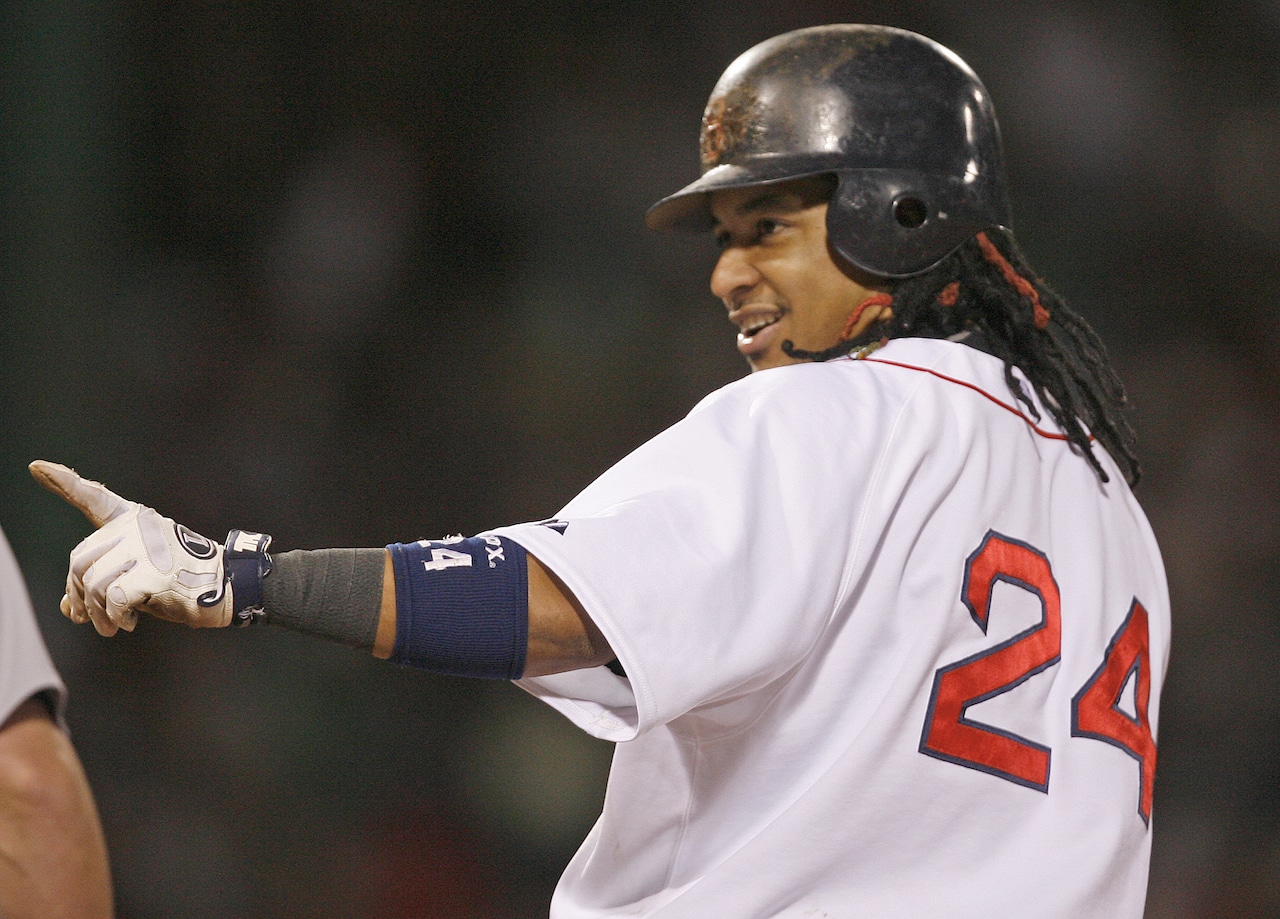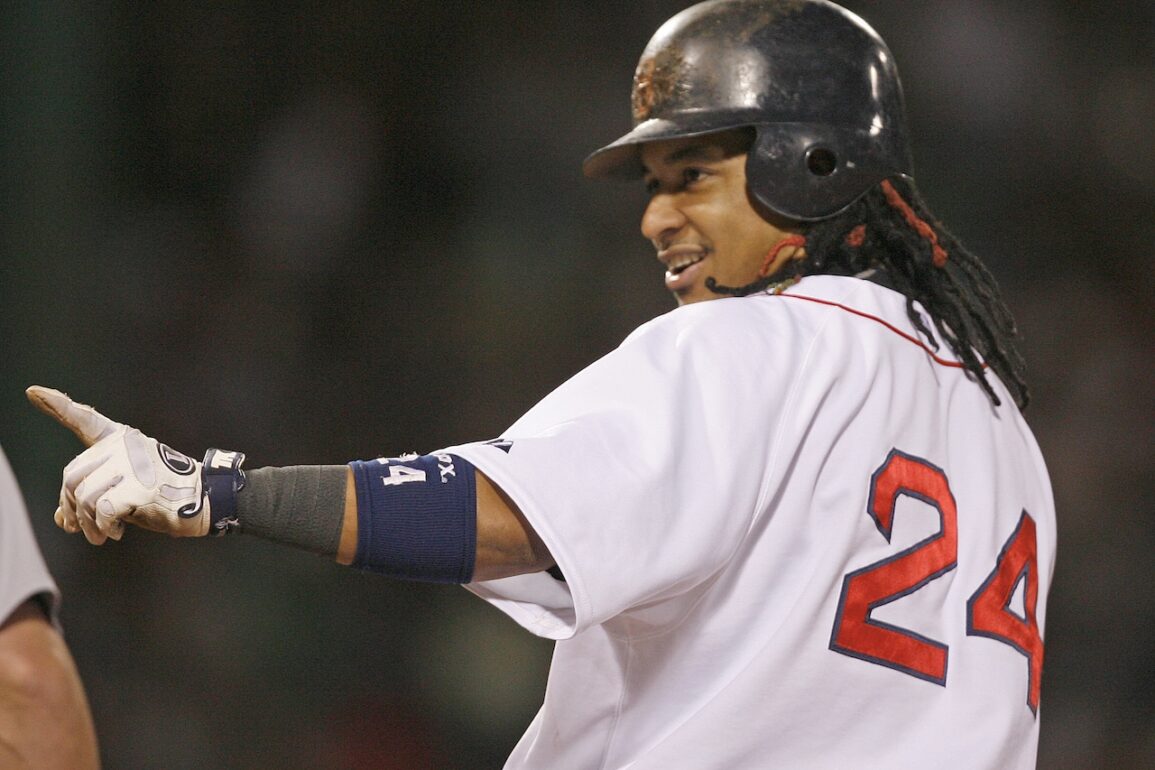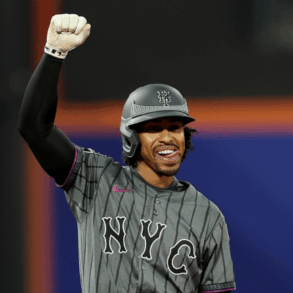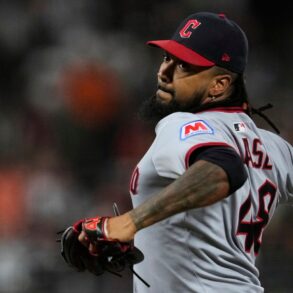
Red Sox fans of a certain age could be forgiven for experiencing some deja vu when the Rafael Devers trade was announced Sunday night.
The deal sent shockwaves throughout New England and the industry. Most everyone knew that there was dysfunction between Devers and the club; but few expected it would come to this, at least not during the season and on the heels of the best stretch of play the team had enjoyed all season.
But you never know.
In recognition of that, here are some other deals the Red Sox have made in the last few decades, so that we can compare and contrast.
1) Nomar Garciaparra to the Chicago Cubs as part of a four-team trade in 2004.
The shock value: Off the charts. Yes, the Red Sox were underperforming. And yes, Garciaparra was in the middle of his worst year in Boston, on and off the field. But trading a five-time All-Star and two-time batting champion in a season in which the team was decidedly all in? Nah, couldn’t happen. Until it did. GM Theo Epstein had concerns that the team’s infield defense could turn out to be his team’s “fatal flaw.”
The reaction: Call it (for the most part): stunned outrage. Garciaparra was hugely popular and this was a huge gamble. Epstein was set upon by an irate fan as he left his office to get dinner in Kenmore Square.
The return: Somewhat light, in retrospect, but perfect for the time. Orlando Cabrera gave them a healthier, better defender at short and his upbeat personality was in sharp contrast to Garciaparra’s mood, which had turned dour and bitter. Doug Mientkiewicz represented a defensive upgrade at first, even if he didn’t hit much.
How it’s like the Devers deal: The Red Sox had an unhappy player on their hands and decided that this was a case of “addition by subtraction” move.
How it’s not like the Devers deal: Garciaparra was eligible for free agency after that season; Devers still has another eight years of control remaining. Also, while Garciaparra had some physical issues that threatened to limit him, Devers was healthy.
How it turned out: Pretttttty, pretttty well, as Larry David would say – the team’s first World Series in 86 years helped everyone forget Garciaparra, who was never the same after leaving. And while neither Cabrera not Mientkiewicz played another game for the Sox after the parade, they had done their part.
2) Manny Ramirez to the Los Angeles Dodgers as part of a three-team trade in 2008.
The shock value: Given that you could never be entirely surprised by anything involving Ramirez, only moderate in one sense. But given that the Red Sox were defending world champs at the time and seemingly well positioned to defend their title at the time, it was something of a surprise.
The reaction: Epstein had built up trust with the fan base, having put together two championship clubs. And because he had gambled before on a mid-season deal with another superstar and won, he was due the benefit of the doubt. But there were some who couldn’t accept moving a hitter the caliber of Ramirez – regardless of the considerable baggage he carried.
The return: Jason Bay came to Boston via Pittsburgh. He may not have been the hitting savant that Ramirez was — few could be — but he posted an .897 OPS the rest of the way and was even better the following year (36 homers, .921 OPS). The fact that the Sox didn’t win it all in either of his two seasons wasn’t held against him.
How it’s like the Devers deal: Ramirez was a complete handful almost from the time he arrived as a free agent. There were trade demands, threats and strange behavior. Devers didn’t have that sort of reputation, but he certainly alienated some this year by his reaction to moving to DH and later, his refusal to play first.
How it’s not like the Devers deal: Trading Devers stripped the Red Sox of their only true run-producer; when Ramirez was shipped out, the Sox still had David Ortiz on hand and Bay incoming.
How it turned out: Mixed. The Sox reached the ALCS, but lost in seven games to Tampa. Would Ramirez have made the difference and helped them win a third World Series in the span of five years? Perhaps. After 2008, the Red Sox didn’t win another postseason series until they won it all again in 2013. But before that, Ramirez began to age quickly and was popped for PED use twice.
3) Mookie Betts (and David Price) to the Los Angeles Dodgers, 2020.
The shock value: Minimal. There had been rumors all winter, and reports of other interested teams (San Diego was one). But again, the timing was curious — days after the start of spring training, with the start of the season just weeks away.
The reaction: In a word: outrage. This was increased by the fact that this was so obviously a salary dump. It would be one thing had Betts been a distraction (he was not), or in decline (far from it). But because this was a big market team waving the white flag because of its unwillingness to pay market value to a star player, the anger was white-hot.
The return: Negligible, which only makes things worse. After an aborted deal was nixed by the Sox over medical concerns (the Sox had been in line to acquire Brusdar Graterol), they ended up with Alex Verdugo, Jeter Downs and Connor Wong. Some five years later, Verdugo and Wong are long gone and Wong is, at best, a back-up catcher. The inclusion of Price, with the Dodgers taking on half of his remaining money, didn’t help here.
How it’s like the Devers deal: Only in the sense that the Red Sox moved a homegrown star and received far less in return than most expected.
How it’s not like the Devers deal: While Devers is under control through 2033, Betts was entering the final season before being eligible for free agency. (Post-script): Before he played a regular season game for L.A. in the Covid-delayed 2020 season, he signed a landmark 12-year extension with the Dodgers). Also, while Devers was either a limited third baseman or full-time DH, Betts was/is a Gold Glove outfielder who’s also played extensively in the infield.
How it turned out: Disastrously. The trade remains a sore spot with the fan base and many point to it as the origin of the team’s downturn this decade. They’ve had just one winning season since the trade was made.
I deliberately avoided citing several other deals in the last 20 or so years for any number of reasons.
The 2012 sell-off of Adrian Gonzalez, Josh Beckett and Carl Crawford was very obviously a salary dump and those players, other than Beckett for a short period of time, were never hugely popular in Boston. Also, among those three, only Gonzalez was performing at all.
Nor was the 2014 sell-off included. At that deadline, in two separate trades, the Sox unloaded Jon Lester (to Oakland) and John Lackey (to St. Louis). Lester was headed to free agency that fall and the team had famously low-balled him in spring training, making a trade seem like a fait accompli.
Finally, the Chris Sale trade in December of 2023 is also not included here, because, although the Red Sox got only the slightest return, no one seemed to care that Sale was being moved.
It was only after Sale rebounded and achieved good health to win the NL pitching Triple Crown and Cy Young Award did people feel outraged.
____________________________
The Red Sox are, publicly and privately, sending signals that they very much intend to be active buyers at the deadline — and perhaps they will.
They quite obviously have a giant-sized hole in their everyday lineup, one that now doesn’t have a single accomplished run producer. That must be addressed if the Red Sox are going to be postseason contenders.
Unloading more than a quarter billion dollars in payroll commitments gives them payroll flexibility, yes, but it will be difficult to utilize that in-season.
Sure, with Devers money off the books, they’ll have much more flexibility going forward. Maybe that will fuel a run at free agent Kyle Tucker, the star of next winter’s free agent class.
But in the more immediate aftermath, it’s hard to see how that newfound financial clout can work to their advantage at the deadline.
They could potentially absorb another big contract, like Christian Yelich or Kris Bryant, but those players are significantly underperforming. What good would that do?
Unless a team on the fringes of contention decides to cut payroll in a big way – San Diego with Fernando Tatis Jr. or Atlanta with Matt Olson — it’s hard to see anyone out there who would be of immediate and long-term help.
It’s more likely the Red Sox aim smaller and save their dollars for the winter. Someone like Baltimore’s Ryan O’Hearn would make sense, since he’s headed for free agency and the Orioles appear to be DOA this season.
The bullpen could use some improvement, too. Ryan Helsley of the St. Louis Cardinals almost certainly will be available – as long as the Cards aren’t in the running for a wild card berth post-All Star break. Helsley is on an expiring deal and is paid $8.25 million for 2025. That would not represent an impediment.
_____________________
One last aspect of the Devers trade that I find curious: it’s often said that those steeped in analytics don’t pay much attention to intangibles like clubhouse chemistry or leadership.
But that clearly wasn’t the case here. Craig Breslow is as data-driven as any lead baseball executive in the game. He relies a great deal on data, not just to evaluate pitching but also hitters.
And yet, in his media availability Monday night, during which he explained the rationale behind the stunning trade, he made several references to clubhouse culture. And indeed, MassLive reported that fear of what lessons were being learned by Roman Anthony, Marcelo Mayer, Chrisian Campbell and others in the wake of Devers’ refusal to change positions was a driving force behind the trade.
That’s not to suggest that Breslow was being disingenuous when he cited those factors. For a team in transition, and given how central a role that trio of rookies will be going forward, it’s completely understandable.
It’s just that it doesn’t fit the prototype for executives who are identified with the analytics movement.
In that sense, the fact that Breslow was able to recognize the importance of clubhouse culture and off-field leadership is encouraging and suggests that he is not, in fact, a slave to the data only — as some have alleged.
This post was originally published on this site be sure to check out more of their content.







